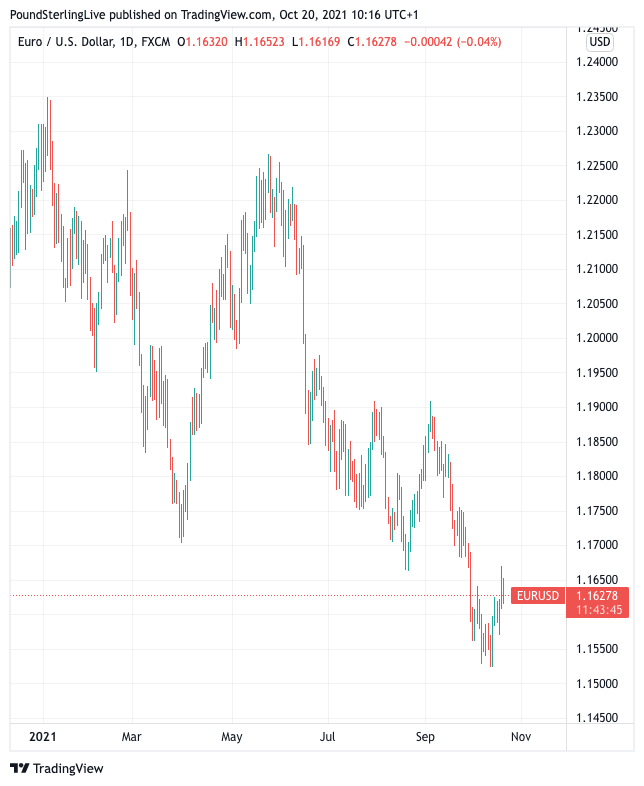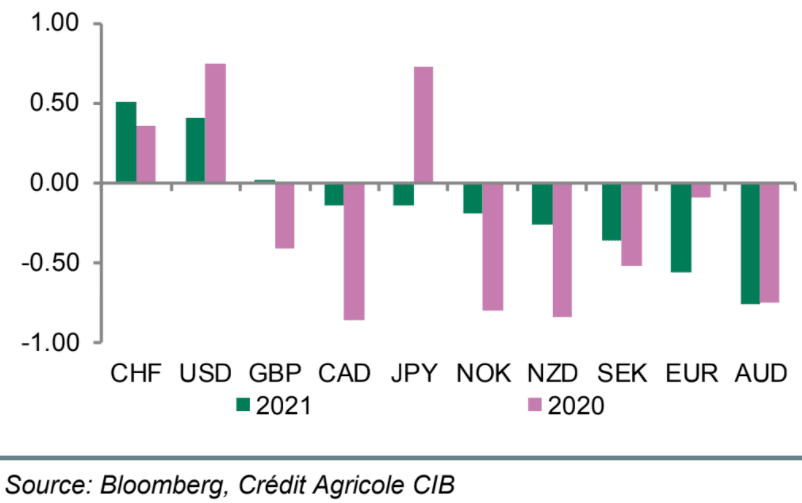Room for "Concerted" Euro Recovery Limited: Rabobank
- Written by: Gary Howes
- ECB's Lane pushes back against the market
- As EUR attempts to recover
- But Rabobank says recovery potential limited
- Credit Agricole says EUR increasingly a 'risk on' currency

Above: File image of ECB Chief Economist Philip Lane, © ECB.
Spot Market Rate at Publication:
EUR/USD: 1.1626
Euro exchange rates will find recovery potential limited by a central bank determined to ensure rate hike expectations remain subdued, while studies also suggest the single currency has become increasingly sensitive to broader risk sentiment in 2021.
Foreign exchange analysts say the Euro's recovery potential will be challenged by a European Central Bank (ECB) determined to ensure the cost of funding in the Eurozone remains as low as possible, even in the face of rising inflationary pressures.
The expectation that the ECB will be one of the last major central banks to raise interest rates has been a key driver of underperformance in the Euro not just in 2021, but in preceding years.
"The cautious stance of the policy guidance from the central bank suggests that room for a concerted recovery in the EUR is still limited," says Jane Foley, Senior FX Strategist at Rabobank.
Rabobank maintain a three-month forecast of 1.15 for EUR/USD.
She adds the recent sell-off in the Euro suggests it may be more sensitive to any "hawkish" remarks from ECB members in the build up to forthcoming ECB meetings.
The call comes as the Euro-Dollar exchange rate lifts off its recent multi-month low at 1.1524 to trade at 1.1627 at the time of writing.
Above: Daily EUR/USD chart showing movement in 2021.
Secure a retail exchange rate that is between 3-5% stronger than offered by leading banks, learn more.
The recovery by the Euro in October still looks flat on the daily chart and bulls found little support from ECB chief economist Philip Lane who said on Tuesday that the market is wrong to bring forward their expected timing of a first interest rate rise at the central bank.
He said it is challenging to reconcile the market rate pricing with the forward guidance the ECB has consistentlyy issued, namely that rates will remain flat until at least 2024.
"Markets may not have fully absorbed the ECB's forward guidance," he told an online event.
"When you look at market prices of the forward interest rate curve I think it's challenging to reconcile some of the market views with our pretty clear, straightforward forward guidance," he added.
The ECB remains keen to ensure the cost of funding in the Eurozone remains low, thereby undermining economic activity.
By communicating that there is no intention to raise interest rates in the near future the ECB and its members help ensure market expectations and funding costs remain stable at ultra-cheap levels.
"ECB chief economist Lane, not for the first time this year, tried to walk back European rates yesterday; however, his comments that implied rate expectations are out of sync with the central bank's guidance but the impact of his dovish commentary on the euro and EUR rates was short-lived," says Kenneth Broux, Strategist at Société Générale.
{wbamp-hide start}
{wbamp-hide end}{wbamp-show start}{wbamp-show end}
The most obvious threat to this stance would be a stubborn run of hotter than expected inflation.
Eurozone annual inflation is expected to be 3.4% in September 2021, up from 3.0% in August, placing it well above the ECB's 2.0% target. However, the vast majority of those price increases came from energy prices, which are surging owing to a global supply crunch.
A wide held view is that once energy prices stabilise inflation will fall rapidly.
Indeed, Lane said on October 07 there’s "very solid evidence" to believe that the current spike in inflation won’t last.
"The red zone for everyone is if inflation became persistent at a number that’s immoderately above the inflation target,” he said. "That’s a very far distance from where the euro area is. We have to be the counterweight, honestly, in this debate."
"The ECB may disagree with and challenge market pricing of interest rates in relation to the forward guidance but investors cannot be blamed for closely tracking inflation expectations," says Broux.
Eurozone inflation expectations (via the euro 5y5y) have this week reached another cycle high after a near 4bp rise to 1.90%.
Meanwhile findings from a major European investment bank finds the Euro is particularly sensitive to global market risk sentiment, finding it to be particularly prone to episodes of deteriorating investor sentiment.
Analysis from Crédit Agricole shows the foreign exchange market has shifted into a more 'risk on' mode of late, a development that would benefit those currencies that tend to appreciate when investor confidence is improving.
Amongst these, the Euro can be counted.
"Investors appear to have become more comfortable with the prospect of higher rates," says David Forrester, Senior FX Strategist at Crédit Agricole.
"The AUD and the EUR remain the G10 currencies most negatively impacted by rises in investor risk aversion and the USD and CHF the most positively impacted," says Forester.
The New Zealand Dollar and Swedish Krona are not far behind the Euro and Aussie Dollar in the 'risk on' line up.
Above: Currency sensitivity to risk sentiment, image courtesy of Crédit Agricole.
As the above testifies, the Euro has become more sensitive to overall risk sentiment in 2021 than was the case in 2020.
Therefore, for further Euro-Dollar gains a supportive investor backdrop might be required into year-end.







